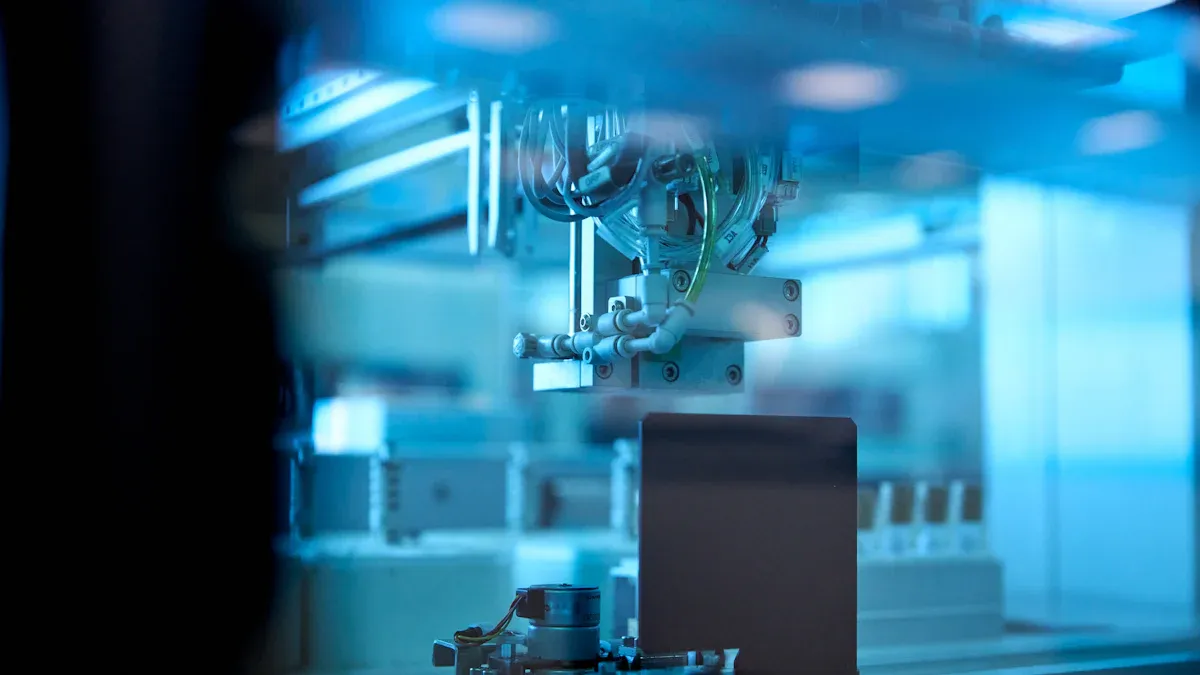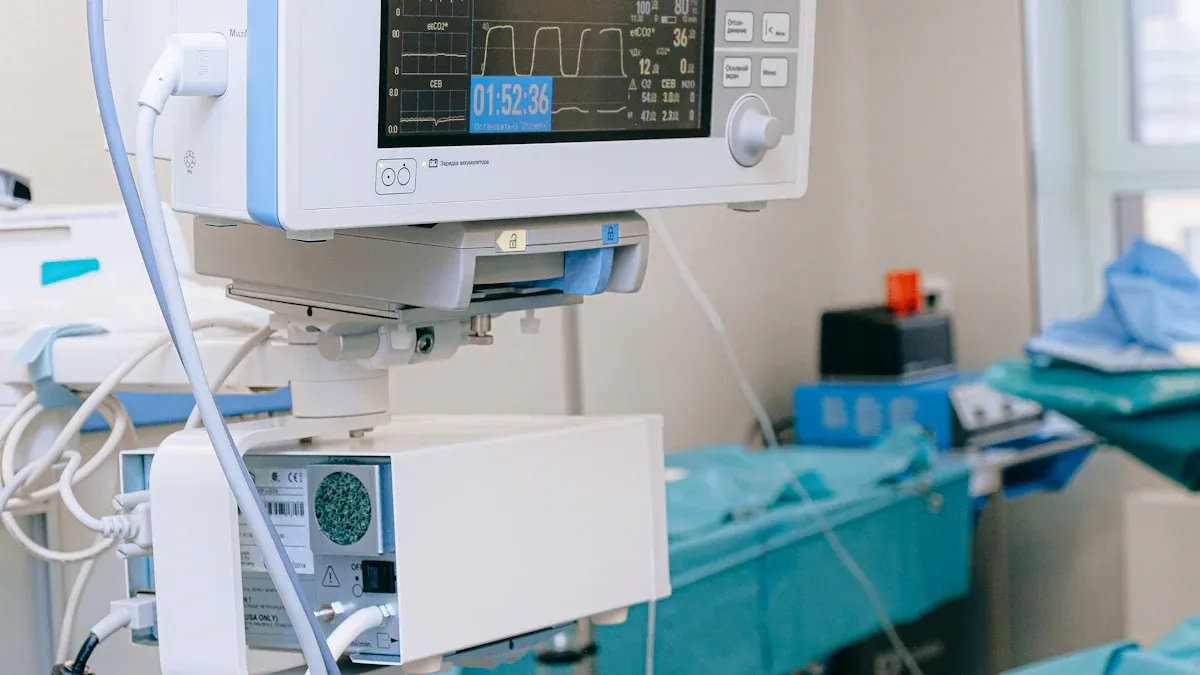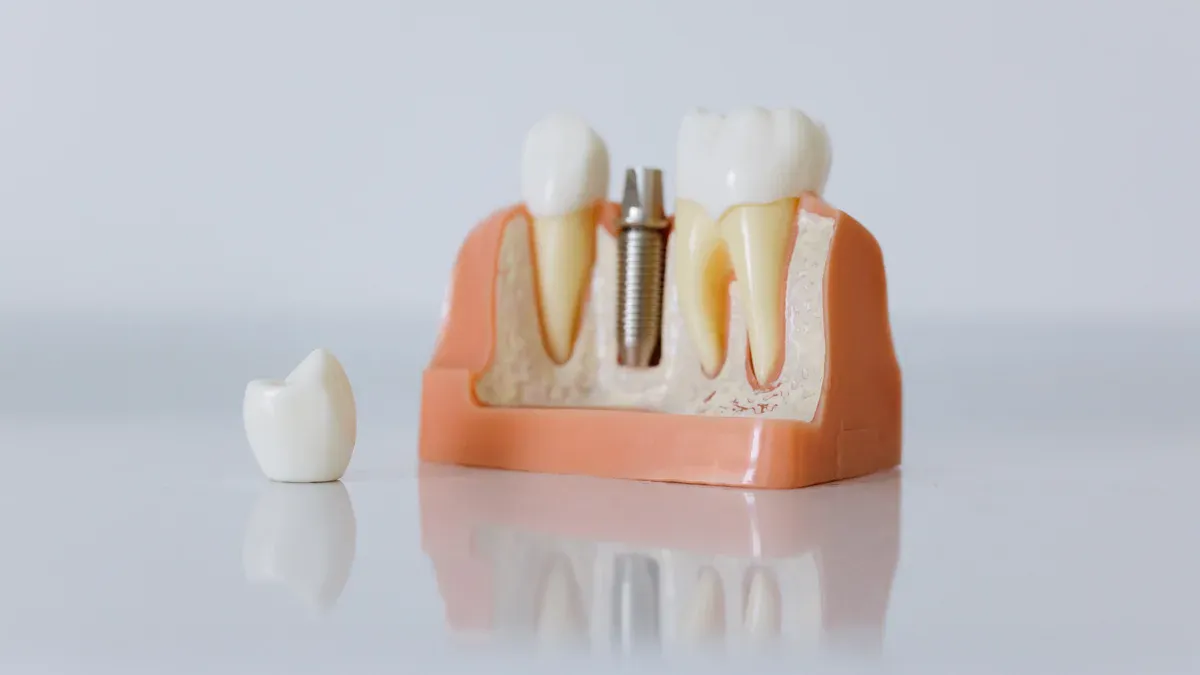How Nitinol Is Transformed Into Advanced Medical Components

Nitinol, a metal alloy of nickel and titanium, exhibits extraordinary characteristics that set it apart in material science. The unique properties of nitinol, such as shape memory and superelasticity, allow it to return to its original form after deformation. These features make it highly valuable in creating nitinol devices and components for the medical field. The alloy undergoes meticulous processes, including alloying, shaping, and heat treatment, to achieve its final functional form.
Its significance in medical applications is unparalleled. For instance:
Nitinol tubing endures repeated stress, making it essential for cardiovascular devices.
Its adaptability in guidewires and catheters enhances precision during minimally invasive procedures, reducing patient trauma.
The rising prevalence of cardiovascular diseases has further increased the demand for nitinol-based solutions in healthcare.
These attributes make nitinol indispensable in advancing modern medicine.
Key Takeaways
Nitinol has special traits like shape memory and flexibility. These make it important for medical tools like stents and catheters.
Making nitinol involves steps like preparing materials, mixing metals, shaping, and heating. These steps ensure the parts are high quality.
Finishing the surface makes nitinol stronger and safer for the body. This lowers risks like tissue harm and blood clots.
Nitinol parts can be customized for each patient. This helps treatments work better.
New ideas in making and designing nitinol improve medical tools. This leads to better care and faster procedures.
Manufacturing Nitinol Devices and Components

Raw Material Preparation
The transformation of nitinol begins with the careful selection and preparation of raw materials. Nitinol, a nickel-titanium alloy, requires precise proportions of nickel and titanium to achieve its unique properties. Manufacturers source high-purity metals to ensure the final product meets stringent medical standards.
The preparation process involves cleaning and inspecting the raw materials to remove impurities. Even minor contaminants can affect the performance of nitinol devices and components, such as stents and catheters. Advanced analytical tools, including spectroscopy, are often used to verify the composition of the metals before proceeding to the next stage.
Alloying and Melting
Once the raw materials are prepared, they undergo alloying and melting. This step combines nickel and titanium in exact ratios to create the nickel-titanium alloy. The process typically takes place in a vacuum or inert gas environment to prevent oxidation.
Vacuum induction melting (VIM) is a common method used in nitinol production. This technique ensures uniform mixing of the metals and minimizes the risk of contamination. The molten alloy is then cast into ingots, which serve as the starting material for further processing.
The quality of the alloy is critical at this stage. Manufacturers conduct rigorous testing to confirm that the material meets industry standards. Any deviation from the required composition can compromise the performance of nitinol wire and other components.
Forming and Shaping
After alloying, the nitinol ingots are processed into their desired shapes. This stage involves multiple steps, including forging, rolling, and drawing, to produce nitinol wire and other forms. The uses of nitinol wire in medical applications, such as stents, require precise dimensions and mechanical properties.
Manufacturers implement strict quality control measures during forming and shaping. These include:
Rigorous testing and inspection at various production stages.
Use of statistical process control and lean manufacturing tools.
Application of six sigma methodologies to minimize defects.
Advanced techniques, such as laser cutting and micro-machining, are employed to create intricate designs. These methods are essential for producing components like stents, which demand high precision.
The forming and shaping process also involves addressing residual stress in the material. Studies have shown that techniques like X-ray diffraction (XRD) and Electronic Speckle Pattern Interferometry-Hole Drilling (ESPI-HD) provide accurate evaluations of stress levels. This ensures the reliability and durability of nitinol devices and components.
Note: Strict adherence to quality standards during forming and shaping is crucial. Any deviation can lead to costly rework or rejection of products, impacting the efficiency of nitinol production.
Heat Treatment and Shape Memory Activation
Heat treatment plays a pivotal role in unlocking the unique properties of nitinol, particularly its shape memory and superelastic properties. This process involves carefully controlled heating and cooling cycles that alter the internal structure of the nickel-titanium alloy. These changes enable nitinol to "remember" its original shape and return to it after deformation, a characteristic that makes it invaluable in medical applications like stents and catheters.
The transformation temperatures of nitinol depend heavily on the heat treatment conditions. Research has shown that different heat treatment temperatures yield varying results in terms of transformation behavior and material properties. The table below highlights key observations:
Heat Treatment Temperature (°C) | Transformation Temperature (°C) | Observations |
|---|---|---|
Below 600 | Increased with heat treatment | Reduced dislocation density and formation of precipitates |
Above 600 | Decreased with heat treatment | Recrystallization completed, precipitates started to dissolve |
400 | B2 → B19 transformation observed | Low heat treatment temperature sufficient for transformation |
800 | B19 ↔ B19′ transformation detected | Higher temperature required for transformation after recrystallization |
At lower temperatures, heat treatment enhances the material's transformation temperature by reducing dislocation density and forming precipitates. In contrast, higher temperatures lead to recrystallization and the dissolution of precipitates, which can lower the transformation temperature. For example, a heat treatment at 400°C is sufficient to induce the B2 → B19 transformation, while a higher temperature of 800°C is necessary for the B19 ↔ B19′ transformation.
Manufacturers use this precise control over heat treatment to tailor nitinol wire and other components for specific medical applications. For instance, stents require a balance between flexibility and strength, which can be achieved by fine-tuning the heat treatment process. This ensures that the final product meets the rigorous demands of the medical field while maintaining the unique properties of the shape memory alloy.
Tip: Heat treatment is not just about achieving the desired transformation temperatures. It also plays a critical role in enhancing the durability and reliability of nitinol devices and components, ensuring they perform optimally under stress.
Surface Finishing and Quality Control
Surface finishing is the final step in the manufacturing process of nitinol devices and components. This stage is crucial for ensuring the safety, durability, and biocompatibility of the final product. Polishing, electropolishing, and chemical etching are commonly used techniques to refine the surface of nitinol wire and other components.
A well-finished surface offers several advantages:
Improved Durability: Polishing removes impurities that could weaken the tubing over time.
Enhanced Safety: A smoother surface reduces friction, lowering the risk of tissue damage during use.
Better Biocompatibility: Surface treatments decrease nickel release, ensuring the tubing remains safe for prolonged use.
Reduced Risk of Blood Clots: Polished surfaces promote smoother blood flow, especially in cardiovascular applications.
Quality control measures are integral to this stage. Manufacturers employ advanced inspection techniques to ensure that nitinol devices and components meet stringent medical standards. These include:
Visual Inspection: Detects surface defects such as scratches or pits.
Dimensional Analysis: Verifies that the components meet precise size specifications.
Nickel Release Testing: Ensures that the surface treatment has minimized the release of nickel, enhancing biocompatibility.
Statistical standards, such as Six Sigma methodologies, are often applied to maintain consistency and minimize defects. This rigorous approach ensures that nitinol wire and other components are safe and reliable for use in critical medical applications like stents and catheters.
Note: Surface finishing not only enhances the performance of nitinol devices but also plays a vital role in patient safety. A poorly finished surface can lead to complications such as tissue damage or blood clots, underscoring the importance of this step in the manufacturing process.
Designing Nitinol Wire and Components for Medical Applications

Biocompatibility and Corrosion Resistance
Nitinol's biocompatibility and corrosion resistance make it a preferred material for medical applications. These properties ensure that nitinol devices and components, such as stents and catheters, perform safely and reliably within the human body. The material's ability to resist corrosion stems from the formation of a stable titanium oxide layer on its surface. This layer minimizes nickel ion release, reducing the risk of adverse reactions.
Surface finishing techniques, such as electropolishing, further enhance nitinol's corrosion resistance. For example, electropolished nitinol tubing demonstrates a breakdown potential of up to 1000 mV, compared to -117 mV for oxidized tubing. This significant improvement underscores the importance of surface treatments in medical device design.
The U.S. Food and Drug Administration (FDA) has also emphasized the importance of biocompatibility testing. In its guidance titled "Technical Considerations for Non-Clinical Assessment of Medical Devices Containing Nitinol," the FDA outlines recommendations for corrosion and biocompatibility testing. These guidelines ensure that nitinol-based medical devices meet stringent safety standards, making them suitable for applications like permanent implants.
Tip: Manufacturers like AccuPath leverage advanced surface finishing techniques to produce high-quality nitinol tubing that meets the rigorous demands of medical applications.
Shape Memory and Superelasticity in Medical Devices
Nitinol's shape memory and superelasticity are transformative features in medical device design. Shape memory allows nitinol to return to its original form after deformation when exposed to specific temperatures. This property is particularly valuable in stents, which can be compressed for insertion and then expand to their intended shape within the body.
Superelasticity enables nitinol to withstand significant deformation without permanent damage. This characteristic is crucial for devices like guidewires and catheters, which must navigate complex anatomical pathways. Nitinol's ability to endure repeated stress without fatigue ensures the durability of these components, even under challenging conditions.
Research highlights nitinol's exceptional fatigue resistance and biocompatibility, making it ideal for long-term use in medical devices. Electropolished surfaces not only improve corrosion resistance but also enhance the material's performance by reducing friction. Coatings like PTFE further optimize nitinol wire for applications requiring smooth and precise movement.
Note: The combination of shape memory and superelasticity has revolutionized the design of stents and other minimally invasive devices, enabling safer and more effective treatments.
Customization for Specific Medical Applications
Nitinol's versatility allows for extensive customization, making it suitable for a wide range of specialized medical applications. Manufacturers can tailor nitinol wire and components to meet specific requirements, such as size, shape, and mechanical properties. This adaptability is particularly beneficial for creating patient-specific devices.
Innovative techniques, such as using 3D-printed polymer cores for shape setting, have expanded the possibilities for customization. For instance, researchers have demonstrated the rapid prototyping of individualized atrial occluders using nitinol. This approach enables the development of minimally invasive implants that cater to unique patient anatomies.
High-purity nitinol materials further enhance the performance of customized components. Studies show that high-purity nitinol improves durability, especially in small components designed for neurovascular applications. Computational simulations and surrogate specimen testing also play a critical role in optimizing designs before physical testing, accelerating the development process.
"The proposed technique introduces an addition to the previous technologies that will enable future work on individualized implants. This technique demonstrates the capability for the rapid prototyping of an individualized atrial occluder, showcasing the versatility of nitinol for patient-specific designs."
AccuPath's expertise in producing high-quality nitinol tubing ensures that medical device manufacturers can achieve the precision and reliability required for customized solutions. Whether for stents, catheters, or permanent implants, nitinol's adaptability continues to drive innovation in the medical field.
Challenges and Innovations in Nitinol Manufacturing
Overcoming Manufacturing Challenges
Manufacturing nitinol wire and other components presents unique challenges due to the alloy's complex properties. High oxygen levels during production can lead to oxidation, compromising material performance. Manufacturers address this issue by maintaining low oxygen environments, ensuring the alloy retains its desired characteristics.
Difficulties in machining nitinol have historically limited design possibilities. Additive manufacturing techniques, such as 3D printing, now offer solutions by enabling intricate designs and improving production efficiency. Continuous monitoring of gas atmospheres during processing further enhances mechanical properties and reduces defects.
The table below highlights key challenges and solutions in nitinol manufacturing:
Challenge | Solution | Outcome |
|---|---|---|
High oxygen levels during printing | Maintain low O2 levels | Prevent oxidation and preserve material properties |
Difficulties in machining nitinol | Use of additive manufacturing | Improved production efficiency and design freedom |
Variations in oxygen content | Continuous monitoring of gas atmosphere | Enhanced mechanical properties and reduced defects |
These advancements ensure nitinol devices and components meet stringent medical standards while maintaining their unique properties.
Advances in Nitinol Design for Emerging Medical Applications
Technological breakthroughs continue to expand the possibilities for nitinol in medical applications. Innovations in surface treatments, such as electropolishing and drug-eluting coatings, enhance corrosion resistance and biocompatibility. Additive manufacturing enables the creation of complex, patient-specific nitinol wire components, improving customization and mechanical performance.
Researchers are developing new nitinol alloys to optimize fatigue resistance and biocompatibility. Enhanced heat treatment methods improve precision in shape-setting processes, particularly for catheter components. Advances in joining technologies allow nitinol to be combined with other materials, facilitating the design of multifunctional medical devices.
Unordered list of key advancements:
Surface treatments improve corrosion resistance and biocompatibility.
Additive manufacturing enables patient-specific designs.
New alloys optimize fatigue resistance and performance.
Heat treatment methods enhance precision in shape-setting.
Joining technologies expand design possibilities for complex devices.
These innovations have led to groundbreaking applications, such as self-expanding stents that adapt to blood vessel anatomy and surgical instruments capable of complex maneuvers in tight spaces. Nitinol's versatility continues to drive progress in medical technology, improving patient outcomes and enabling minimally invasive procedures.
The transformation of nitinol into advanced medical components showcases the precision and innovation required to meet modern healthcare demands. From raw material preparation to surface finishing, each step ensures that nitinol retains its unique properties, such as shape memory and superelasticity. These characteristics enable its use in life-saving devices like stents, guidewires, and bone anchors.
Nitinol has become a cornerstone of medical technology due to its adaptability and reliability. In cardiovascular care, it restores blood flow through self-expanding stents. In urology, it navigates narrow pathways without causing tissue damage. Orthopedic and dental applications also benefit from its durability and biocompatibility, enhancing patient outcomes.
The growing prevalence of chronic diseases and the demand for minimally invasive procedures continue to drive innovation in nitinol-based solutions. Hospitals increasingly adopt these components to improve procedural efficiency and reduce healthcare costs. Future advancements in nitinol design and manufacturing will further revolutionize medical devices, offering new possibilities for personalized care and better health outcomes.
Note: Nitinol's transformative impact on healthcare underscores its role as a vital material in advancing medical technology and improving lives.
FAQ
What makes nitinol unique for medical applications?
Nitinol's shape memory and superelasticity allow it to adapt to the human body. Its biocompatibility and corrosion resistance ensure safety and durability, making it ideal for devices like stents, catheters, and implants.
How does heat treatment affect nitinol's properties?
Heat treatment alters nitinol's internal structure, enabling shape memory and superelasticity. Precise temperature control tailors its transformation behavior, ensuring optimal performance in medical devices like guidewires and bone anchors.
Is nitinol safe for long-term use in the human body?
Yes, nitinol is safe due to its biocompatibility. A titanium oxide layer minimizes nickel release, reducing risks of adverse reactions. Surface treatments further enhance safety, making it suitable for permanent implants.
Can nitinol devices be customized for individual patients?
Manufacturers use advanced techniques like 3D printing and shape-setting to create patient-specific devices. These methods enable customization of size, shape, and mechanical properties, improving outcomes for unique anatomical needs.
What challenges exist in manufacturing nitinol components?
High oxygen levels and machining difficulties pose challenges. Solutions include low-oxygen environments and additive manufacturing, which improve design flexibility and production efficiency while maintaining material integrity.
See Also
Nitinol Tubing's Impact on the Future of Medical Devices
Nitinol Tubing's Contribution to Progress in Medical Technology
The Importance of Nitinol Tubing in Medical Innovations
The Manufacturing Process of Nitinol Tubing for Healthcare
Investigating Nitinol Tubing Uses in Medical Device Development

